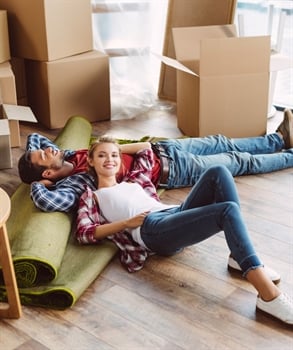Moving house doesn’t really bring out the best in people and it can be quite a conflictive process if not handled carefully. One occasional source of conflict is when the seller and the buyer have different ideas about what is included in the price. Should you take everything that can be moved, or are there certain things that will typically be left behind?
How do I know what is included in the selling price of my home?
When you sell your home, you’ll be filling in a TA10 Fixtures and Fittings Form. This details all the things that you are going to take (fittings) and what you’re going to leave behind (fixtures).
As a rule of thumb, if you need to use tools to remove it from the wall, it’s probably a fixture that should be left. Examples of fixtures that you leave behind when you move include:
- bathroom suite
- built-in wardrobes
- door furniture
- fitted carpets
- kitchen worktops and cupboards
- light fittings and switches
- mirrors and cabinets that are part of the bathroom suite
- plugs
- radiators
- shelves fixed to the wall
If you’ve got fancy knobs, light fittings, taps or showerheads that you’d like to take with you, replace them with standard fittings before you go and make everything good.
Co-Op Legal Services has some information about fixtures and fittings, or you can ask your conveyancing solicitor to clarify.
What about plants in the garden?
We have a blogpost about what you can take from your garden when moving house.
Can I take the lightbulbs with me when I move?
Some people claim that you can take light bulbs, and theoretically, you can do that. But it seems a bit rude and unkind to leave your buyers in the dark! So if you have non-standard light bulbs that you want to take to your new home, replace them with basic standard bulbs.
Do I take my wheelie bin with me when I move house?
If your bin is council property, leave it behind. The previous occupants of your new house should have left their bin for your use. And if you’re moving to a different area, your old bin may not be compatible with the local council’s arrangements.
By the way, it’s a kindness to avoid leaving your buyer with a bin that is overflowing. Take a load to the tip if you can.
Dispose of rubbish and junk when leaving your old house
Your contract with your buyer will include a condition that the property is sold with vacant possession on completion. This means that the property has to be empty of people and chattels – this includes the paint tins in the shed and the rolls of wallpaper in the attic.
What if I’ve got furniture I’m not sure I want to keep in my new house?
Even if you’re not sure you want to keep a piece of furniture, you still have to get it out of the house. You can’t expect your buyer to store it for you. If necessary, put it into self-storage while you make a decision about keeping it. You can store furniture for a few weeks or months, and when you insure your stored goods with Store and Insure, you only pay for the time that it's actually stored.
Where can I get more advice on what to take and leave when I move?
Still have questions about what you can and can’t take with you when moving house? Talk with your estate agent or solicitor. They can help you negotiate with the buyer.




